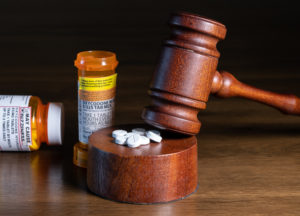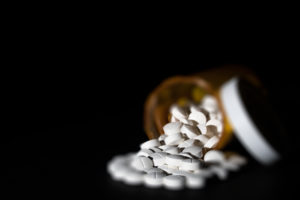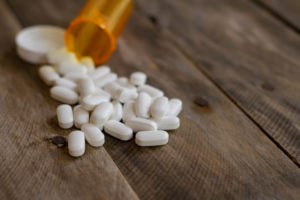As some of my readers know, I recently accepted a position on the legal advisory board to the Sara Jane Brain Foundation. It’s is an amazing group, founded by an amazing father who wanted a better approach to the diagnosis and treatment of his infant daughter who suffered a severe brain injury as an infant. This article will educate you the reader on how this group came about and how we plan to implement a uniform and standardized approach to the diagnosis and treatment of Pediatric Acquired Brain Injury on a nationwide basis.
On June 5, 2005, Sarah Jane Donohue was born. When she was just five days old, she was shaken by her "baby nurse" and sustained three broken rips, both collar bones and a severe brain injury. This nurse pled guilty and was sentenced to 10 years in prison but young Sarah Jane was sentenced to a lifetime of difficulties due to the damage to her brain. Just last month, Sarah Jane turned four years old. She cannot crawl, walk, speak words or eat solid foods. She receives weekly physical therapy, occupational therapy, vision therapy, feeding therapy, and speech therapy. She also attends a special full time preschool where she receives special instruction.
The injury sustained by young Sarah Jane is a "Pediatric Acquired Brain Injury". A traumatic brain injury is an injury to the brain caused by external physical forces. Other brain injuries are caused by an internal occurrence which damage the structure of the brain itself from the inside.
What prompted the launch of the Sarah Jane Brain Project was the tireless efforts of Sarah Jane’s father, Patrick B. Donohue. What Mr. Donohue has come to learn is that we, as a society, know less than 5% of what we will eventually know about the brain itself. The field of neurology is very fractured worldwide. When I say fractured, I mean there is very little shared knowledge going on between the different locations of research and investigation. If you think of the computer science field back in the 1950s, there were many brilliant people working worldwide, yet no one knew what everyone else was doing. Today, in the field of computer science, there are open source principals and concepts involving shared knowledge such as Wikipedia and Linux Operating System. This allows many people who are researching or investigating the same issue to share their knowledge so that other researchers aren’t "reinventing the wheel". As of today, no one is really using these same principals in the field of pediatric neurology. It was the idea of Mr. Donohue when he launched the Sarah Jane Brain Project in October 2007 to begin an open source initiative by placing all of the Sarah Jane’s medical records and therapy sessions on line in an open source forum. Mr. Donohue felt that the more "eyeballs" that were on her case, the more likely she was to benefit from all of the information out there worldwide.
Once Sarah Jane’s medical records were placed online in an open source forum (www.thebrainproject.org), Phase II of the National PADI Plan commenced. In this phase, Mr. Donohue and those involved in the Sarah Jane Brain Project began to recruit families to develop a national advisory board. Mr. Donohue felt that the more families who had a child with a pediatric acquired brain injury, the more information that can be shared and the more change that can occur within the field. It was clear at the time that every family, when they are first confronted with a child who has sustained a closed head injury or traumatic brain injury, has the exact same learning curve and must reinvent the wheel. It was believed that 85% of what all families go through in the care, treatment and understanding of pediatric brain injury is identical. This National Familial Advisory Board was developed to "standardize the wheel". But, not only were families recruited, but also medical practitioners within the field and attorneys within the field. Almost every single major medical institution and research university is represented currently on the National Advisory Board to the Sarah Jane Brain Project.
Once the National Advisory Board was cemented, Phase III began, where this same Board developed a National PABI Plan. Over 65 leading experts gathered in New York City to draft a PABI Plan. The intent was to create a seamless, standardized, evidence based system of care which would be universally accessible for all PABI families regardless of where they live in the United States. The first draft of this Plan was sent as "the First Official Letter to President Barack Obama" on January 20, 2009.
Phase IV of the National PABI Plan commenced just last month. Within each state, a lead center of excellence was established. These centers within each state would be a resource for families to look to when a child sustains a traumatic brain injury or closed head injury. The implementation date was June 5, 2009 which happened to be Sarah Jane’s fourth birthday present. At that same time, the Sarah Jane Brain Project began funding the state lead centers and case management systems to assist families in need.
Some of you at this point may be asking, "Why does each state need a lead center and what responsibilities and/or categories of care would those centers have?" Well, despite the existence of generic "medical standards", there is chaos when it comes to the diagnosis and treatment of pediatric brain injury. There is no uniformity of approach, there is extreme regional variation, there are varying degrees of interest and commitment between states, there is confused nomenclature, there are poorly defined and understood immediate therapeutic goals, and there are unnecessary procedures being implemented as well as wasted money and time, which ultimately leads to incomplete family care.
The question then is: "What can the Sarah Jane Brain Pediatric Acquired Brain Injury Plan do?". In a nutshell, it is a network built on commitment. By putting this network to work, we can define priorities for evidence based improvement, we can coordinate efforts among disparate centers with similar strengths and we can facilitate integrative research efforts through grant writing support staff, coordinated federal and private support work as well as assistance in orchestrating the national priority itself. Attorneys here at Smith & Johnson are glad to be not only a part of the National Legal Advisory Board, but also proud to be spear heading the construction of this network here in the State of Michigan.
The mission or goal of the National PABI Plan is to disseminate via each state a master plan. There will be collaboration within each state and with other states to teach, train and track public awareness, citizen involvement and the long term needs of the victims and survivors of pediatric acquired brain injury. Each state will staff a center representative, an individual in charge of basic science, a staff person in charge of education, one in charge of training, one in charge of prevention, one in charge of case management, and the last to be in charge of registry. Within each regional center, there will be a national center with each state having a representative to the national center. That regional center will be charged with staffing the following areas: prevention, acute injury, reintegration, adult transition, mild TBI, rural needs and family registry. The concept will be that families, through the internet, can reach out and find the Sarah Jane Brain Project via the internet and then be assigned to their lead center within their respective state. The lead center will then be able to direct the family immediately to the assistance they need as it relates to education, training, case management, etc.
Stay tuned as I plan on going into greater detail regarding these phases and what it will mean to Michigan families who are dealing with these issues.

Mr. Smith has practiced as a trial attorney since graduating Notre Dame Law School in 1992. He has litigated cases across the country including cases from Ventura County, California to Middlesex County, New Jersey. He practices in both State and Federal courts.










4 Comments
Mike Bryant
Great information and very helpful use of the real life cases. It is important that we continue to search for more improvement in this area of medicine.
Marilyn Colter
Together we can do anything. This is such a wonderfully motivational project! It is so important to work together to develop new treatments, new ideas and an ongoing system for improving what we know about brain injury.
Thanks for the update!
Jane Akre
This is wonderful information and research- thank you Mr. Smith for putting this out to our readers!!!
Facebook User
The sharing and collective pooling of knowledge, insight and research offers a brighter future for survivors, families and others. A concept that has been long over due. Collectively there will be challenges, but the end result will be worth it; "A greater understanding of such a disabling and often invisible injury". Advancing our understanding together has great potential.
Comments for this article are closed.